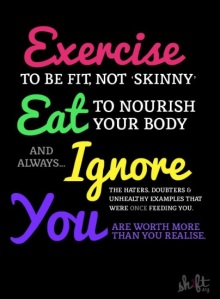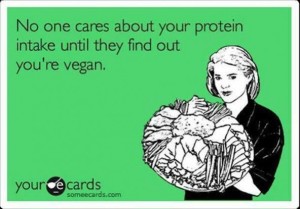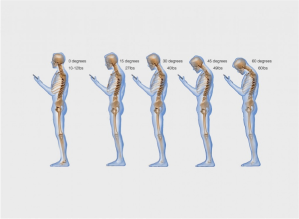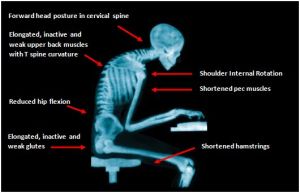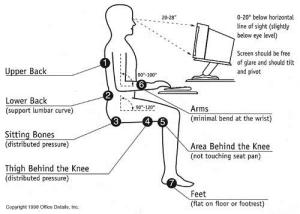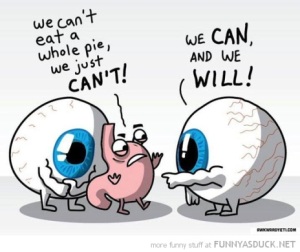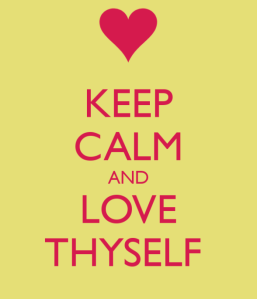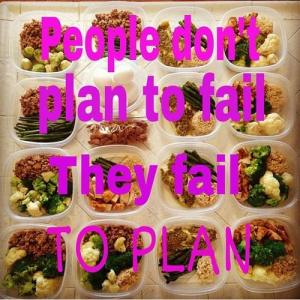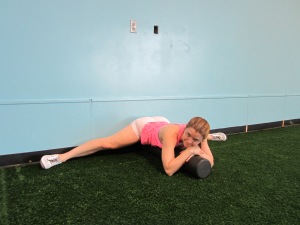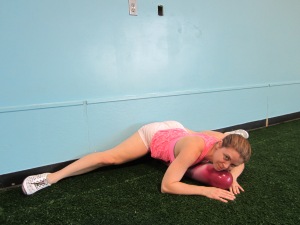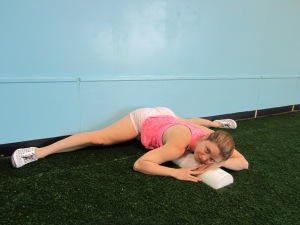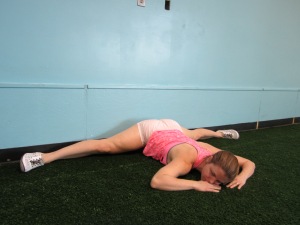In Fitness As In Life: Lessons from Lifting
It has now been over 5 years that I have been working here at the Fitness Center.
In that time, I have of course learned a lot about fitness and coaching exercise. I have also learned a lot about how to help people change their behavior for the better.
The more I learn about fitness, the more the lessons keep on reconnecting and reinforcing each other. And lessons learned in the gym are also frequently applicable through other areas of life.
Recently, I had a moment when I realized just how much I had changed and learned. I was looking back at an old photo of me from just over 5 years ago that I had posted on my Facebook page, and I stopped to look at the comments.
This was at a time when I was frequently performing with a dance group, which translated into lots of high intensity interval training. This was also before I had discovered weight lifting, so I was pretty skinny (when I use the word skinny, I use it with the connotation of being frail, weak, or perhaps even malnourished). My dance group costume included a crop top and one of my friends asked me what was my “diet secret.”
What really caught my attention was my response. I could barely recognize the person that I once was. My response was full of dogma and attitude, and quite frankly unhelpful I imagine, as far as giving my friend information and helping to motivate her to improve her own health and fitness.
I felt embarrassed to look back and read those words I wrote, but thankful that I have had the opportunity to learn and improve. Working here at the Fitness Center, I am able to see the daily evidence of lives that I have touched, and people who I have helped to discover their health and fitness.
It’s good to periodically take a step back and look at what you have learned, so here are some lessons that I want to share with you. I hope you like them, learn from them, and let me know what other lessons you have learned in the gym. That way we can all keep learning and improving together.
Do you have an exercise philosophy?
As someone starts to learn more and more about health and fitness, they will frequently develop a “training philosophy.” This means their opinion of what is the right way to do things.
Your training philosophy will depend on who mentored you, what worked for you to get you to your goals, and what you were naturally good at already.
If you someone who is naturally slender and loves to run, you might develop a training philosophy around running. If you have different natural dispositions and goals, you might develop a training philosophy around kettlebells, TRX, barbell complexes, bodyweight training, bodybuilding style, high intensity interval training, or any of a number of other possibilities.
I can see that my tendency to use bodyweight training stems a lot from preference as a recreational gymnast/aerialist. I can argue that bodyweight exercises are extremely convenient (which they are – no equipment needed!), but I know I also have my bias behind it.
As my own personal “philosophy” develops, I can describe it in shorter and shorter sentences and phrases. I also try to avoid relying too heavily on any one tool or method with clients, as these will change depending on who I am working with and what their goals are.
So here is my take on what people should do in the gym:
1) Have Fun
Exercise should be fun, really fun. Because if it isn’t fun, then what’s the point? Sure, exercise reduces your risk of lots of chronic diseases, but you’ll never get yourself to do it regularly if you don’t enjoy it. Exercise is a health habit, just like brushing your teeth. In order to get the full benefit, you need to KEEP DOING IT! You’ll only get yourself to keep doing it day after day if you honestly enjoy it. As your fitness improves, looks for physically active hobbies as well.
2) Do it for You
It is common to start an exercise program for external reasons. People start working out to look more attractive to their spouse, or to appease family members who have concerns about their health. Ultimately, you are the one who will be putting in the time, so make sure that YOU want it. Most people exercise for a combination of reasons with one primary reason, such as “I want to feel good and be healthy, but mostly look great in shorts.”
It’s fine and good to have several sources of motivation. Make sure that one of those top reasons is for you – no one else. Exercise because you like it, and it makes you feel great.
Remember that people who set goals are the ones who go places! Use your motivation to set goals that inspire you, and maybe even intimidate you a little. As you achieve a goal, set a new one. You are a work in progress, not done yet.
3) Move Well and Move Often
There are so many paths to fitness. Methods are different, but not necessarily superior to one another. It is the over-arching principles of kinesiology that remain the same.
The concept of moving well means minimizing unnecessary forces on your joints. You’ll know if you are moving well because you can move easily with no pain, and you rarely get injured (from training or movement errors – it can’t save you from accidents or blunt force trauma).
Our bodies are built to move daily. Not everything needs to be an intense “workout” but it helps to build more activity into your routine through regular walks, stair climbing, frequent stretching to alleviate the stress of sitting for extended periods, and anything else you can work in to your schedule.
4) Try to Fail Sometimes
Failure is an uncomfortable thing. It can be even more daunting going in to a task when you think you will most likely fail. Even harder than that is keeping your head up and giving your best effort despite chance of failure.
Most people don’t know their true limits because they don’t push to edge of their abilities. You don’t need to push to the edge frequently, but it’s good to do it sometimes.
Keep in mind that as your fitness improves, the limits of your strength, flexibility, and endurance will push out. Every once in a while, test the waters to see where those new limits are. Just be smart and make sure you have a coach or a spotter so you don’t end up falling on your face.
5) Everything is Awesome!
It’s more than just a Lego Movie reference! Strength is awesome. Flexibility is awesome. Endurance is awesome. Power is awesome. Agility is awesome. Balance is awesome. You get the point… everything is awesome.
This is a lesson to not get stuck too much in the dogma of any one method. A well-rounded person will try their hand at all kinds of physical skills. You will find favorite things and spend more time on those favorites, and that is OK. Just don’t forget about the rest of the Fitness Universe out there. Your body needs some of everything to stay healthy and functional.
Even though everything is awesome, you will occasionally find particular exercises or pieces of equipment that you just hate. That is ok. You don’t have to do something you hate. There are always substitutes and alternatives. Also, you may find those things you hate go away as your ability improves. I used to hate pistol squats until I gained sufficient leg strength to do them decently.
—
I hope these ideas inspired you and got you thinking. Please share with me what you learn as well.
